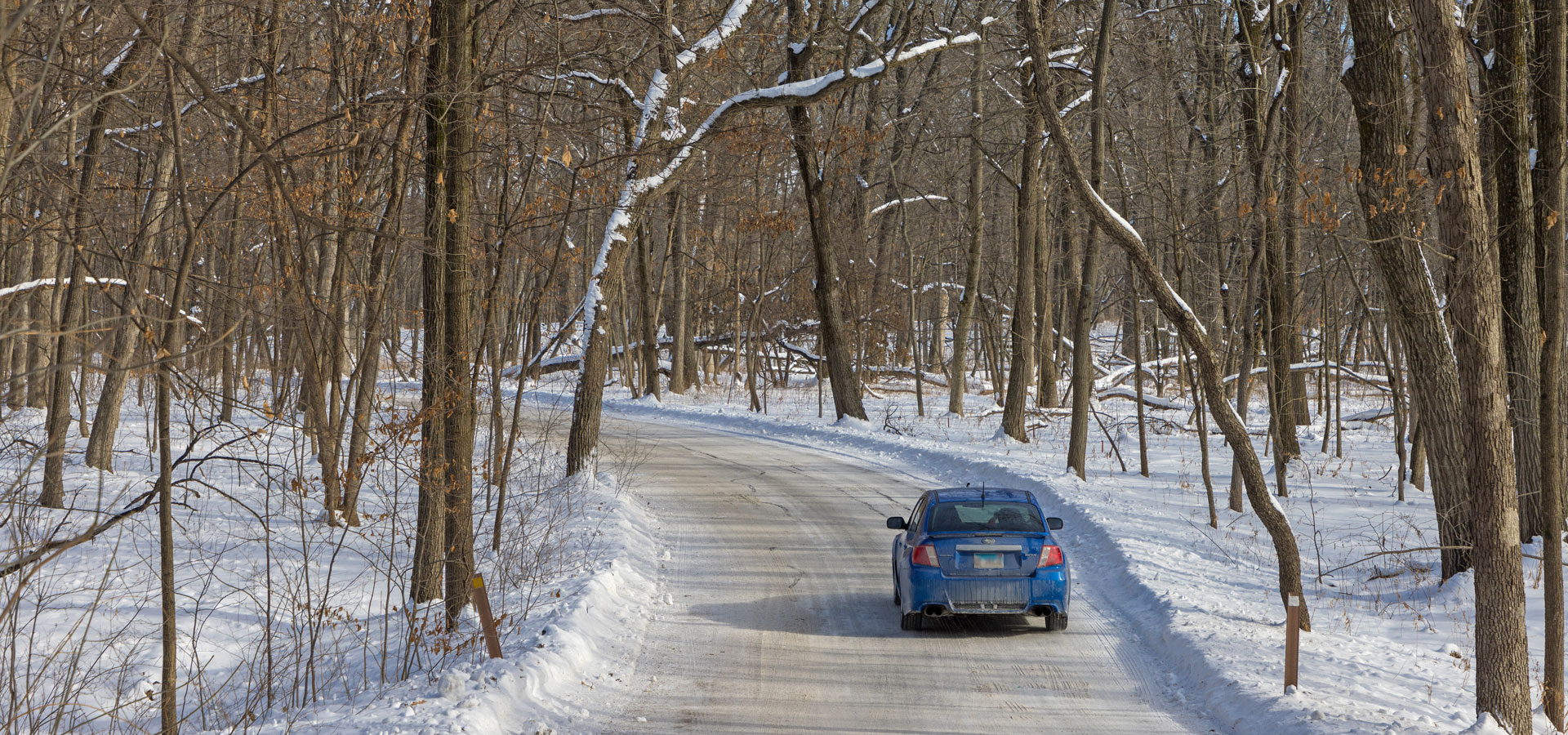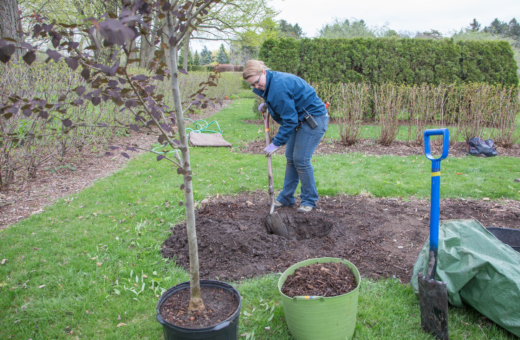February 7, 2023
Even on blustery cold days, you can still enjoy the wellness benefits that trees provide with a leisurely drive through The Morton Arboretum. Stay warm in the comfort of your car while listening to a playlist or podcast of your choice, and discover the many beautiful sights along the Arboretum’s scenic roadways.
Nine miles of one-way paved roads allow easy navigation (no GPS apps needed), and 33 parking lots serve as starting points for exploration on foot. Just 25 miles west of Chicago, the Arboretum offers a winter respite, brimming with natural beauty and tranquility. If needed, downloadable maps of the East and West sides are available online.
(Quick tip: Stop by the Ginkgo Café in the Visitor Center for a snack and a hot beverage before hitting the road.)
To guide your winter exploration on four wheels, here is a sampling of what you can see along the Arboretum’s winding roads.
Main Route, East Side
Sweeping vistas, woodlands, lakes, and outdoor art await you.
- Your journey begins near Meadow Lake (Parking Lots P-1 and 2) as the road wraps around its edges before heading up to the aptly named Frost Hill (P-3), situated 745 feet above mean sea level. The Arboretum’s first appointed director, Clarence Godshalk, explained how the hill got its name, “Every time I send men up there, we seem to be in the coldest weather in winter, and they christened it ‘Frost Hill.’” Stop at the top for a beautiful view of the DuPage River valley and adjacent Conifer Collection.
- The drive takes you past four of the Human+Nature sculptures: Hallow (P-1 and 2), UMI (P-5), Ephemera (P-14) and Sentient (P-17 and 18). Each of these is visible from your car or is a short walk from a parking lot. Exclusive to the Arboretum, the Daniel Popper exhibition is the largest of its kind anywhere in the world and examines the interconnectedness of people and trees. February is the final month of the full exhibition’s run. (Five of the eight sculptures will remain into mid-March.)
- Before reaching UMI, begin to take in the calming effects of Crabapple Lake (P-5). The lake derives its name from the tree collection that surrounds its banks.
- As you continue into the sprawling East Woods, you will feel enveloped by trees. Covering 400 acres, it’s the largest natural feature on the Arboretum’s East Side. Deer roam the Arboretum grounds and often can be spotted in the East Woods in wintertime. Coyote, owls, and others who make the Arboretum their home may also make appearances.
- Before leaving the East Woods, you’ll come across the enchanting Spruce Plot (P-12) – a favorite among photographers and Instagrammers. In the 1920s, Arboretum founder Joy Morton planted a grove of Norway spruce trees as an agricultural experiment. Because the spruces were planted in such close proximity to one another, they shade out each other’s lower branches, contributing to the trees’ tall, bare trunks and the shafts of sunlight that peek through the tree canopy. Native to northern Europe, Norway spruce trees can live up to 300 years.
As your tour of the East Side concludes, consider continuing on to the West Side to see two Human+Nature sculptures (visible from the road), Lake Marmo, Sterling Pond, Bobolink Meadow, Pine Hill, and the DuPage River valley, among other winterscapes.
To reserve a timed-entry admission ticket for your driving adventure, visit mortonarb.org.



